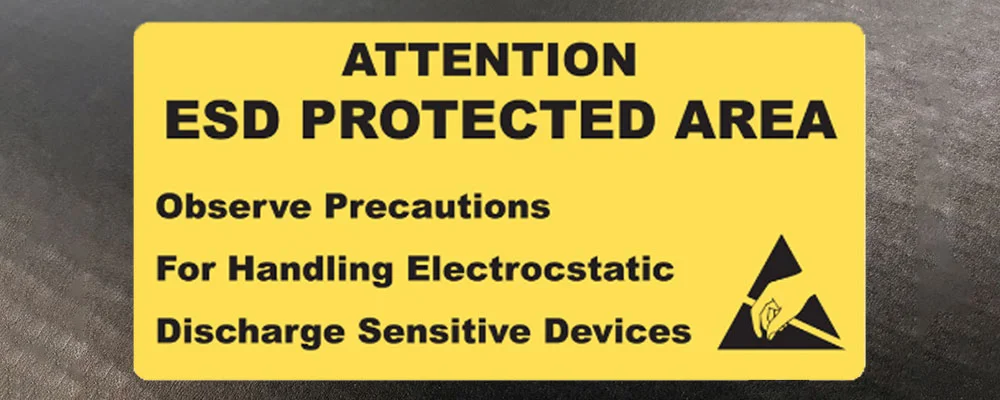Electrostatic discharge sensitive (ESDS) components and devices are electronics that are extremely susceptible to damage from electrostatic discharge.
As we’ve discussed before, electrostatic discharge is the flow of electric charge that happens when two objects with different potentials come in contact. Usually, the current is so small that we don’t even notice it. Other times, it can be strong enough to give us a mild shock.
However, it doesn’t cause us any serious harm.
ESDS components, on the other hand, can be damaged with as little as 5-volts of electricity. If you consider that we can generate about 35,000 volts simply by walking on a carpet on a relatively dry day, you will see how this can be dangerous to them.
Luckily, there are ways to keep ESDS components safe from static electricity.

How Do You Keep ESDS components Safe from Static?
While it is not possible to completely eliminate ESD, there are measures you can take to reduce the amount of static around sensitive components, and potentially remove their exposure to it.
Reduce Movement
As you know, objects rubbing against each other can produce static. This includes the friction between your clothes and body, the floor and your shoes, etc. The more you move, the more likely it is that you acquire a charge which will create a spark when you touch a body with the opposite charge. By reducing movement, you can reduce the amount of charge you accumulate.
Be Careful When Handling the Device
Whenever you handle ESDS components, be careful about holding them by the edge or frame. Make sure you don’t touch the solder joints, pins, or exposed circuitry as these are most susceptible to ESD damage.
Remove from Packaging Carefully
ESDS components need to be carefully packed for transport, as regular packaging is not safe from ESD. This packaging includes:
Intimate Packaging
This is the packaging that is physically touching the components.
Proximity Packaging
While not touching the device, proximity packaging encloses one or more of the ESDS parts.
Secondary Packaging
Secondary packaging gives an extra layer of protection to the outside of the proximity packaging.
Before you remove the component out of its anti-static packaging, touch the bag to an unpainted metal part for over two seconds. This will transfer any charge on the packaging as well as on your hand to the metal surface.

No Unnecessary Detours
Once you take the component out of the packaging, install it immediately. If you must set it down, put it on the anti-static packaging. On other surfaces, there is a risk of static damage. Also, if you leave it unattended, there is a chance that someone else who isn’t as careful might touch it.
Careful in Cold Weather
Humidity inside rooms tends to go down in cold weather, and dry conditions are conducive to static build-up. Be extra careful during the winter, as that is a high-risk time for ESD.
Work at an ESD Station
An ESD workstation is an area where you can ensure that any static is constantly being conducted away from you and your tools. Here’s how you can set up an ESD workstation.
By being careful about ESD, you can ensure that expensive and delicate ESDS components are not ruined by static.
At VODEX, we offer ESD protection products, like ESD workbenches, ESD clothing, or flooring.






